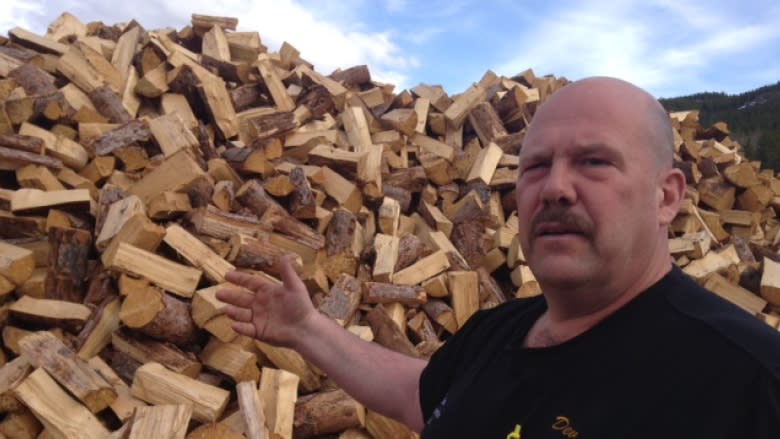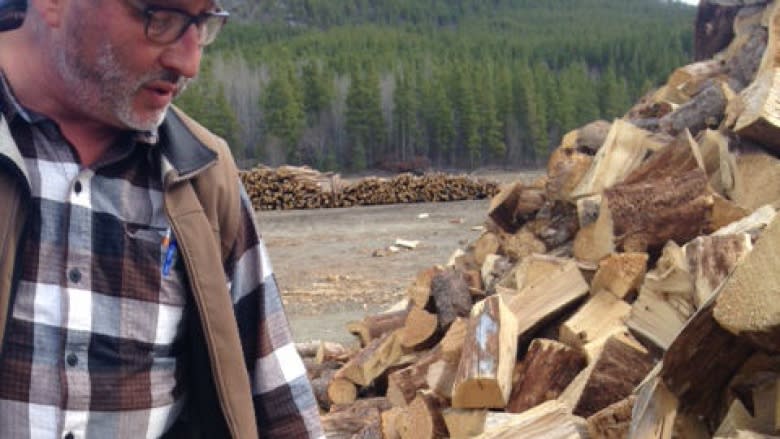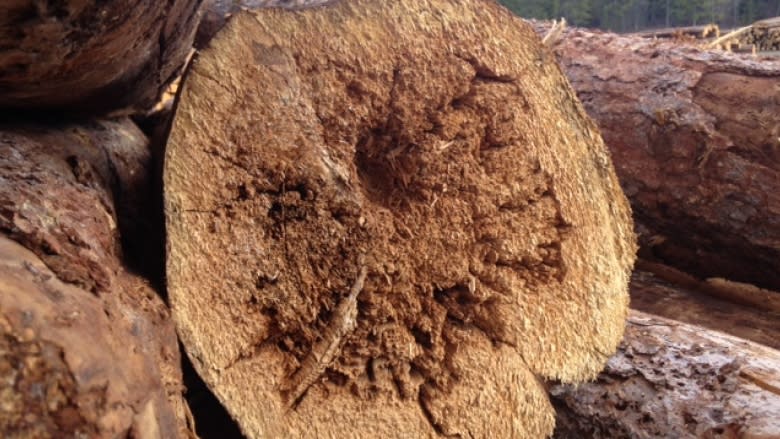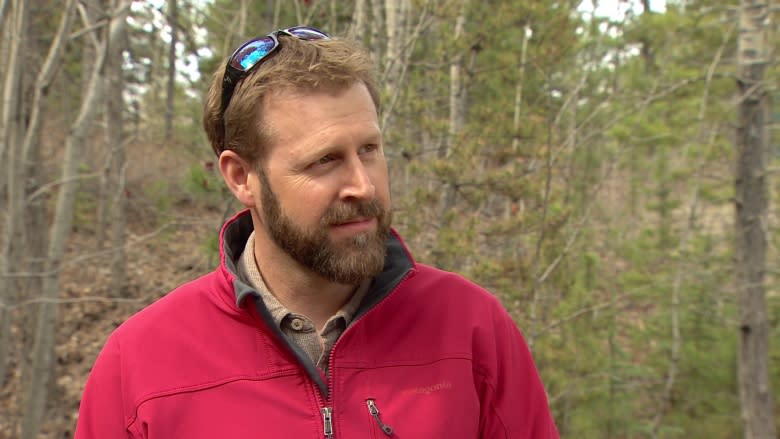Yukon's supply of spruce beetle-killed firewood threatens to rot
It was the good that came from the bad — a seemingly endless supply of dead trees to harvest, casualties of a devastating spruce bark beetle infestation in southwest Yukon.
But that supply may come to an end after all, possibly within a few years.
"You're getting rot in it," says Myles Thorp of the Yukon Wood Products Association. "The stuff that died in the early part of the infestation in the early '90s, through the '90s, is probably getting to the point where there's a lot of rot."
The spruce beetle epidemic killed an estimated 350,000 hectares of forest in the Haines Junction area before petering out a few years ago. The infestation peaked around 2004, when beetles destroyed an area of forest about two-thirds the size of Prince Edward Island.
Since then, commercial and private wood-cutters have been having a field day. That vast swath of ravaged forest became a valuable woodlot.
It's become more valuable with the passing years, says Marc Meyer with the Yukon government's forestry branch.
"The firewood industry is growing, there are more people that are switching to wood-burning stoves, and we have more harvesting applications coming through our door every year."
But Meyer knows those beetle-killed trees won't be good forever.
"It is a limited resource," he says. "Over time, the trees do develop rot naturally and that's just a natural process."
The cost of sorting
Dev Hurlburt's business, Hurlburt Enterprises, processes and sells thousands of cords of beetle-killed firewood every year, mostly around Whitehorse. He agrees — some of the wood isn't as good as it used to be.
"It's definitely noticeable," Hurlburt says. "Fortunately, the two loggers we buy logs from do their best to separate [the rotten wood] out."
Still, Hurlburt ends up picking through his piles to find more.
"I want to get all of them I can, because of course I don't want to go back and deliver to the same person for free, because we guarantee it," Hurlburt says.
Thorp says because logging operations have to sort out the bad wood, waste piles get "pretty big." He says consumers may see the cost of firewood go up, if wood cutters are spending more time and energy sorting the best wood.
"They're handling that material and it reduces efficiency and it drives their cost up," he says.
It's still viable — for now
The Yukon government is now working with the Champagne Aishihik First Nation to take an inventory of how much beetle kill wood is left, and how much is useable.
A lot of those 350,000 hectares of beetle-kill forest are off limits to harvesters. Some are within First Nation's land, some in Kluane National Park and Reserve, and other areas are protected as wildlife habitat.
Still, there are a lot of trees waiting to be cut, Meyer says.
"The resource is still there, it's still viable," says Meyer. But for how long, he can't say — beyond "the next few years."
After that, it's not clear where Yukon woodcutters will next move to find a large, accessible supply of good firewood.
"That's a question that's on all our minds here," Meyer says. "We are currently working through that. I can't give you a definitive answer."





